Papers 1
Wifried Jentzsch – Interactive processes between sounds and images in Visual Music
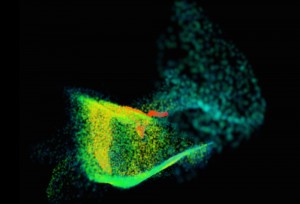 In this paper I would like to present interactive processes between sounds and images used in my Visual Music piece Particle World. This composition is based on the smallest audible and visible unit of perception: Particle Synthesis for visual and Granular Synthesis for sounds. The interactive processes will be presented in three stages:
In this paper I would like to present interactive processes between sounds and images used in my Visual Music piece Particle World. This composition is based on the smallest audible and visible unit of perception: Particle Synthesis for visual and Granular Synthesis for sounds. The interactive processes will be presented in three stages:
The music is based on a Chinese lute. A basic sequence has been created and a large number of transformations has been derived from it in the manner of spectral compression by using my own Max/MSP program.
Particles as physical elements produce clouds. They have been structured by the Turbulence Field and their Complexity and form the visual part of this piece.
The relationship between audio and visual is characterized by interactivity. The characteristics of sounds react directly to the particles in which the amplitude of the sound controls the movement of a 3D Camera (x,y,z) located in the image´s center. In this way varying complex configurations of particle clouds have been produced in space and time.
With this method a close-relationship between both media has been created.
Link to Particle World:
Biography
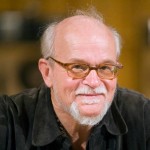 Born in 1941, Wilfried Jentzsch studied composition at the Musikhochschule Dresden, the Akademie der Künste Berlin, and electronic music in Cologne.
Born in 1941, Wilfried Jentzsch studied composition at the Musikhochschule Dresden, the Akademie der Künste Berlin, and electronic music in Cologne.
From 1976 to 1981 he studied at the Sorbonne in Paris under Xenakis where he was awarded a degree of doctorate in the field of musical aesthetics. He conducted at the same time a research of digital sound synthesis at IRCAM and the CEMAMu.
He was the professor of composition and the director of the Electronic Studio at the Musikhochschule Dresden from 1993 to 2006. His Electroacoustic/Visual Music works have been presented at ZKM, VMM Boston and New York, Cinema Fest Melbourne, CEMC Beijing, EMUfest Rome, GRM Radio France, Cinema Nouveau Montréal, Musiques & Recherches Bruxelles and Tokyo. He is also working as a curator of Visual Music together with Hiromi Ishii. He has received international composition prizes in Boswil (Switzerland), Paris, Bourges and ZKM Karlsruhe, and was invited as guest-composer and lecturer for numerous festivals worldwide. Two CD with acousmatic compositions were published by Schott: Visions (WERGO Arts 8105 2) and sai-ji-ku (WERGO Arts 8121 2).
Jaroslaw Kapuscinski, Stanford University – Noh Theater as Intermedia
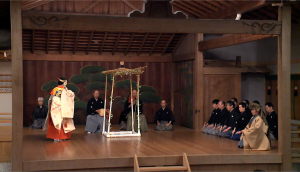 If one were to define intermedia as a way of forming expression by drawing power from relationships between visual and aural media, Noh Theater would be one of its world’s most sophisticated and mighty exemplars. Following a general introduction to multiple levels and forms of intermodal coordination, the paper will discuss examples of unique structural and semantic interaction between dance, music, poetry, and dramatic staging from two fragments of contrasting plays: Kokaji and Hashitomi. The presentation will take advantage of visualizations and tools developed in collaboration with a team from Stanford University for a new website on the topic.
If one were to define intermedia as a way of forming expression by drawing power from relationships between visual and aural media, Noh Theater would be one of its world’s most sophisticated and mighty exemplars. Following a general introduction to multiple levels and forms of intermodal coordination, the paper will discuss examples of unique structural and semantic interaction between dance, music, poetry, and dramatic staging from two fragments of contrasting plays: Kokaji and Hashitomi. The presentation will take advantage of visualizations and tools developed in collaboration with a team from Stanford University for a new website on the topic.
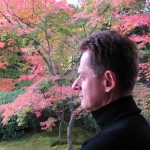 Biography
Biography
Jarosław Kapuściński (b.1964) is an intermedia composer and pianist whose work has been presented at New York MOMA; ZKM in Karlsruhe; Centre Pompidou in Paris; and Reina Sofia Museum in Madrid, among others. He has received awards at the UNESCO Film sur l’Art festival in Paris, VideoArt Festival Locarno, and FNCNM in Montréal. Currently, he is Associate Professor of composition and intermedia and Chair of the Music Department at Stanford University.
Kathy Hinde – Creating audio-visual installations that aspire to foster a deeper understanding and empathetic relationship with the natural world
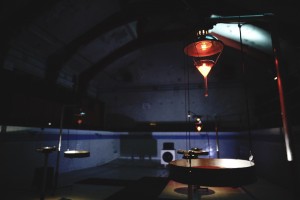 How effectively can experiential knowledge of the complex systems of nature be transferred through engagement with immersive audio-visual experiences to raise awareness of humankind’s relationship with the natural environment?
How effectively can experiential knowledge of the complex systems of nature be transferred through engagement with immersive audio-visual experiences to raise awareness of humankind’s relationship with the natural environment?
Do the combination of art forms and the appeal to more than one sense enhance the immersive qualities of an audio-visual installation?
These issues are central to Kathy’s practice, and she will share some of her recent audio visual installations that emerge from these questions.
Biography
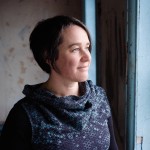 Kathy Hinde’s work grows from a partnership between nature and technology expressed through audio-visual installations and performances that combine sound, sculpture, image and light. Kathy frequently works in collaboration with other practitioners and scientists and often actively involves the audience in the creative process. She has created light and sound installations in public spaces, including urban streets, woodlands and forests.
Kathy Hinde’s work grows from a partnership between nature and technology expressed through audio-visual installations and performances that combine sound, sculpture, image and light. Kathy frequently works in collaboration with other practitioners and scientists and often actively involves the audience in the creative process. She has created light and sound installations in public spaces, including urban streets, woodlands and forests.
She has shown work extensively across Europe, China, Pakistan, USA, Canada, Colombia, Mexico, Brazil and New Zealand. She became a Cryptic associate in 2015. Kathy received an Honorary Mention at Prix Ars Electronica 2015, was runner up for PIARS Sonic Arts Award in 2014 and long listed for the Aesthetica Art Prize in 2014 and 2018. In 2017, Kathy received an ORAM award and a British Composer Award in Sonic Art. Kathy is a 2018 selected artist for European SHAPE Platform for innovative music and audiovisual art.
Keynote 1
Myriam Boucher, Université de Montréal – Sound/Image Relationships in the Context of Abstraction: Towards a Typological Proposition
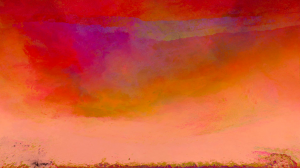 Issuing from the electroacoustic music field, videomusic closely associates sound and moving image within a unified perceptual space, guided by intuitive rules that largely remain to be formalised. The perceptual space of videomusic exists in a non-narrative context that is typically devoid of story. Constructed from sounds and images manipulated with computer-based processing, editing and compositing, the use of technology is at the heart of the videomusic practice. It proposes a hybrid form between the abstract and the representational where form, color and movement are the main objects of interest.
Issuing from the electroacoustic music field, videomusic closely associates sound and moving image within a unified perceptual space, guided by intuitive rules that largely remain to be formalised. The perceptual space of videomusic exists in a non-narrative context that is typically devoid of story. Constructed from sounds and images manipulated with computer-based processing, editing and compositing, the use of technology is at the heart of the videomusic practice. It proposes a hybrid form between the abstract and the representational where form, color and movement are the main objects of interest.
My Ph.D. in electroacoustic composition, more precisely in videomusic composition, focuses on the musical writing of the image from the structural and typological foundations of electroacoustic music. The work aims to propose a classification of sound/image relationships as a building bloc for an eventual grammar of the genre. Starting from established references such as Pierre Schaeffer’s TARTYP, Stéphane Roy’s functional analysis and a number of ideas floated by Michel Chion in his writings about sound in the moving image context. As a by-product of this research, I hope to provide analytical linguistic tools useful for the practice of videomusic, in a similar way that acousmatics is helped by Schaeffer’s or Roy’s analysis and typomorphological ideas.
The largest part of the literature on the links between sound and image is concerned with the creation of sound at the service of the image, and its effect in cinematographic narrative. It is then mainly discussed in terms relating to instrumental music or sound design. I wish to open up new avenues of reflection by seeking counsel with electroacoustic music, and draw inspiration from its writing, its particularities and its creative processes. The purpose is to use the same kinds of organisational insights to compose moving imagery, as they are used for composing sound. Since this practice is relatively young (dating from the later half of the 20th century with the work of both filmmakers and composers), the work is often seen as experimental but, as the practice evolved, an urgent need is felt for descriptive handles to talk about videomusic. Several types of decision-making are made in the process of creating an audiovisual work, all of which are intuitive and/or deductive. I wish to examine the affect of these decisions and see how this information can be organized in a formal classification, so the work can be better understood and discussed.
I will not summarize my research here, but rather present a section on the initial outline of a typology of audiovisual relationships. The classification consists of a table formed – for the moment – of 18 relations, divided into three main categories : diegesis, synchresis and time. These relationships make it possible to conceptualize the role played in the work by the sound-musical-visual dialogue.
Biography
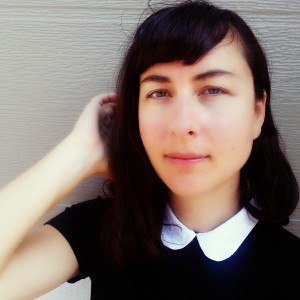 Myriam Boucher is a video and sound artist based in Montreal (Canada). Her sensitive and polymorphic work concerns the intimate dialogue between music, sound and image, through videomusic, immersive projects and audiovisual performance. Her work was won many prizes, such as the 2015 and 2016 (first prize) JTTP awards, the LUFF 2017 (experimental short-movie award), the 2015 JIM Electroacoustic Compositions Competition and the Bourse Euterke 2015,
Myriam Boucher is a video and sound artist based in Montreal (Canada). Her sensitive and polymorphic work concerns the intimate dialogue between music, sound and image, through videomusic, immersive projects and audiovisual performance. Her work was won many prizes, such as the 2015 and 2016 (first prize) JTTP awards, the LUFF 2017 (experimental short-movie award), the 2015 JIM Electroacoustic Compositions Competition and the Bourse Euterke 2015,
and has been presented at many international events including Mutek (CA), Igloofest (CA) and Kontakte (DE). Boucher’s work departs from a free gesture and tends towards nature, passing from the material to the immaterial. She explores the desire for freedom and questions our intrinsic relationship to life.
Papers 2
Andrew Duff, University of Sussex – I don’t think anyone has been electrocuted yet: Sharing info online to modify an old games console for vector oscillographics.
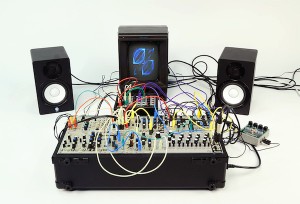 Since sharing a pdf online about how to modify a Vectrex (an early 1980s vector-based games console) to directly take in three audio signals to draw directly on the screen as one would with an oscilloscope, I have unwittingly become a ‘go-to guy’ with regards to entering the world of vector oscillographics. I have since been invited to talk at various electronic music events and am regularly contacted with requests for support, information and recommendations on appropriate modules. All the while the games console itself becomes harder to find on the second-hand market as they are perhaps becoming something of a cult artefact sought after by both gamers and electronic artists/musicians alike.
Since sharing a pdf online about how to modify a Vectrex (an early 1980s vector-based games console) to directly take in three audio signals to draw directly on the screen as one would with an oscilloscope, I have unwittingly become a ‘go-to guy’ with regards to entering the world of vector oscillographics. I have since been invited to talk at various electronic music events and am regularly contacted with requests for support, information and recommendations on appropriate modules. All the while the games console itself becomes harder to find on the second-hand market as they are perhaps becoming something of a cult artefact sought after by both gamers and electronic artists/musicians alike.
The Vectrex offers a unique visual experience rarely found in standard oscilloscopes; it utilises three inputs for x, y and z control of the electron beam, is monochromatic, and the screen is relatively large. It does, however have its own idiosyncrasies, which makes for an interesting tool to work and perform with.
This talk will present a brief contextual history of experiments in this field with some examples of influential oscillographic artists such as Ben Laposky & Herbert W. Franke, followed by an overview of the impact sharing this pdf has had with examples of work by a range of current artists, experimentalists and performers.
Biography
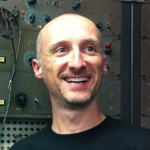 Andrew Duff is a sound artist and organiser of the University of Sussex based Brighton Modular meet. Since the late 1980s, Andrew has amassed a large collection of electronic music, and collected, modified and experimented with a range of, generally, Japanese analogue synthesizers, DJing, recording music and performing live at club nights and various other events. Since completing a Masters in Design and Digital Media in 2000, he has been involved in teaching and academic research, whilst developing his own work.
Andrew Duff is a sound artist and organiser of the University of Sussex based Brighton Modular meet. Since the late 1980s, Andrew has amassed a large collection of electronic music, and collected, modified and experimented with a range of, generally, Japanese analogue synthesizers, DJing, recording music and performing live at club nights and various other events. Since completing a Masters in Design and Digital Media in 2000, he has been involved in teaching and academic research, whilst developing his own work.
Bret Battey, De Montfort University – Audiovisual Counterpoint in Estuaries 3
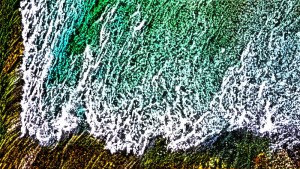 ‘Audiovisual Counterpoint in Estuaries 3’ will discuss the use of mixed algorithmic and manual means to establish gestural and event counterpoint between sound and image in the author’s work ‘Estuaries 3’. Building on the author’s previous Seeing Sound talk on ‘Fluid Audiovisual Counterpoint’, Estuaries 3 serves as a step in establishing ‘an audiovisual counterpoint of articulations of continuums’.
‘Audiovisual Counterpoint in Estuaries 3’ will discuss the use of mixed algorithmic and manual means to establish gestural and event counterpoint between sound and image in the author’s work ‘Estuaries 3’. Building on the author’s previous Seeing Sound talk on ‘Fluid Audiovisual Counterpoint’, Estuaries 3 serves as a step in establishing ‘an audiovisual counterpoint of articulations of continuums’.
Biography
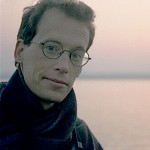 Bret Battey (b. 1967) creates electronic, acoustic, and audio-visual concert works and installations, with a focus on generative techniques. He has been a Fulbright Fellow to India and a MacDowell Colony Fellow, and he has received recognitions and prizes from Austria’s Prix Ars Electronica, France’s Bourges Concours International de Musique Electroacoustique, Spain’s Punto y Raya Festival and MuVi4, Abstracta Cinema of Rome, Amsterdam Film eXperience the Texas Fresh Minds Festival, and the Red Stick International Animation Festival for his sound and image compositions. He pursues research in areas related to algorithmic music, haptics, and image and sound relationships. He completed his masters and doctoral studies in Music Composition at the University of Washington and his Bachelors of Music in Electronic and Computer Music at Oberlin Conservatory. His primary composition and technology teachers have been Conrad Cummings, Richard Karpen, and Gary Nelson. He also served as a Research Associate for the University of Washington’s Center for Digital Arts and Experimental Media. He is a Professor of Audiovisual Composition at the Music, Technology, and Innovation Research Centre at De Montfort University, Leicester, UK.
Bret Battey (b. 1967) creates electronic, acoustic, and audio-visual concert works and installations, with a focus on generative techniques. He has been a Fulbright Fellow to India and a MacDowell Colony Fellow, and he has received recognitions and prizes from Austria’s Prix Ars Electronica, France’s Bourges Concours International de Musique Electroacoustique, Spain’s Punto y Raya Festival and MuVi4, Abstracta Cinema of Rome, Amsterdam Film eXperience the Texas Fresh Minds Festival, and the Red Stick International Animation Festival for his sound and image compositions. He pursues research in areas related to algorithmic music, haptics, and image and sound relationships. He completed his masters and doctoral studies in Music Composition at the University of Washington and his Bachelors of Music in Electronic and Computer Music at Oberlin Conservatory. His primary composition and technology teachers have been Conrad Cummings, Richard Karpen, and Gary Nelson. He also served as a Research Associate for the University of Washington’s Center for Digital Arts and Experimental Media. He is a Professor of Audiovisual Composition at the Music, Technology, and Innovation Research Centre at De Montfort University, Leicester, UK.
Rob Mullender, London College of Communication – Bringing to Light the Voice Figures of Margaret Watts-Hughes
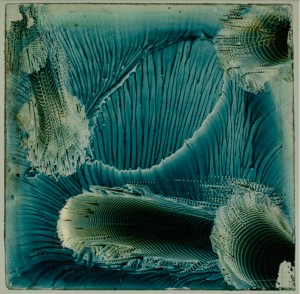
This paper will discuss a recently discovered archive of audio-visual works, created in the late 19th Century by the Welsh singer and Philanthropist Margaret (Megan) Watts-Hughes. In attempting to measure the power of her voice, Watts-Hughes discovered that materials and sound can interact to form patterns – effects most commonly known through the work of Ernst Chladni in the late 18th Century, and Hans Jenny’s ‘Cymatics’ of the early 20th. Watts-Hughes’s work was different in that she utilized her voice, conceiving of and building a device (the ‘Eidophone’) to record it permanently onto glass or ceramic plates. The resulting patterns – known as ‘Voice Figures’ – are rich, complex and varied, born of multiple techniques and approaches.
These objects are notionally situated in the late 19th Century discourse surrounding the senses, voice, audio-visuality and perception.
However, Watts-Hughes was fully invested in an aesthetic predilection for ‘natural’ forms over abstraction, and set her voice and her apparatus toward this end. Many plates appear to represent plants and flowers, some even landscapes, and being deeply religious, a connection between her voice and her creator appears reified within these works through a mimesis of natural order. As such we can find within these remarkable objects a meditation on the metaphysics of the voice from the vantage point of the late Romantic era.
The discovery of these works – never reproduced in colour and until recently considered lost – presents a unique opportunity to reexamine a liminal figure in historical studies of sound and the voice.
Biography
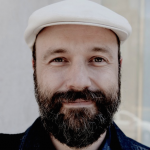 Dr. Rob Mullender teaches sound, construction for film & television, and critical/contextual studies on the Live Events and Television, Sound Arts and Design BAs at London College of Communication. He received his PhD in 2011 from CRiSAP, which looked at how light could be used to synthesize sound. Rob produces sculpture, sound, 2D, performance and moving image works when he can. Most recently he has performed Minor Conspiracy for adapted reed organ and eight breathing participants, Happy Ending – a site specific intervention for improvising musicians and massage parlour, and Ex Voto – a piece for 6 metres of nickel-chromium wire and mains electricity, in response to the Brunel Tunnel Shaft in Rotherhithe, London. He has exhibited and presented research internationally and in the UK, and was a Leverhulme Artist in residency at the Brunel Museum in 2016/17.
Dr. Rob Mullender teaches sound, construction for film & television, and critical/contextual studies on the Live Events and Television, Sound Arts and Design BAs at London College of Communication. He received his PhD in 2011 from CRiSAP, which looked at how light could be used to synthesize sound. Rob produces sculpture, sound, 2D, performance and moving image works when he can. Most recently he has performed Minor Conspiracy for adapted reed organ and eight breathing participants, Happy Ending – a site specific intervention for improvising musicians and massage parlour, and Ex Voto – a piece for 6 metres of nickel-chromium wire and mains electricity, in response to the Brunel Tunnel Shaft in Rotherhithe, London. He has exhibited and presented research internationally and in the UK, and was a Leverhulme Artist in residency at the Brunel Museum in 2016/17.
Keynote 2
Jean Piché, Université de Montréal – Synchronicity, Meta-narrative and Abstraction: Considering integrated perception in videomusic
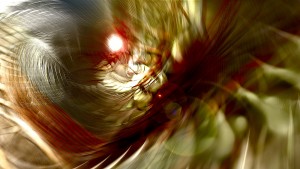 Even in non-narrative contexts, moving images exercise a fearsome power over perception. What then makes images musical? While form, colour and movement (gesture/time) are the three pillars shared by image and sound, narration is, in theory, absent in both. But is it really so? When one experiences an integrated discourse about nothing (or so little), what is left once the experience is over?
Even in non-narrative contexts, moving images exercise a fearsome power over perception. What then makes images musical? While form, colour and movement (gesture/time) are the three pillars shared by image and sound, narration is, in theory, absent in both. But is it really so? When one experiences an integrated discourse about nothing (or so little), what is left once the experience is over?
Akin to musique concrète in its use of raw and processed perceptual materials, videomusic attempts sensorial integration while avoiding anecdote and narrative. In doing so, it often circumvents simple diegetic relationships (noise you can see and objects you can hear). Sourcing early and recent works by myself and others, a critique of videomusic will show why it both succeeds and fails.
Biography
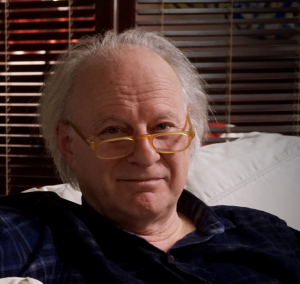 Jean Piché (1951) is a composer, video artist, professor and software designer living in Montreal. His practice focuses on videomusic, a hybrid form he has helped define in the early 90s. More recently he turns to photography as a fixed representation of movement, musical or not. He was one of first composers in Canada to explore the emerging digital tools for music and sound. He has approached all contemporary forms of musical expression including opera, fixed media, mixed instrumental and live electronics by espousing the view that poetics supersede formalism. His music was presented worldwide and has been described as confounding, colorful and virtuosistic. As a professor at the Université de Montréal, he has guided a few generations of young artists who are active today in music and the media arts. He also develops software, notably Cecilia and the music platform for the famed “One Laptop per Child” program at MIT Media Lab. Since 2015, he is Associate Director for artistic research at CIRMMT (Centre for Interdisciplinary Research in Music, Media and Technology) at McGill University in Montreal
Jean Piché (1951) is a composer, video artist, professor and software designer living in Montreal. His practice focuses on videomusic, a hybrid form he has helped define in the early 90s. More recently he turns to photography as a fixed representation of movement, musical or not. He was one of first composers in Canada to explore the emerging digital tools for music and sound. He has approached all contemporary forms of musical expression including opera, fixed media, mixed instrumental and live electronics by espousing the view that poetics supersede formalism. His music was presented worldwide and has been described as confounding, colorful and virtuosistic. As a professor at the Université de Montréal, he has guided a few generations of young artists who are active today in music and the media arts. He also develops software, notably Cecilia and the music platform for the famed “One Laptop per Child” program at MIT Media Lab. Since 2015, he is Associate Director for artistic research at CIRMMT (Centre for Interdisciplinary Research in Music, Media and Technology) at McGill University in Montreal
Papers 3
Douglas Nunn, Anglia Ruskin University – Approaches to vector-based audiovisual performance
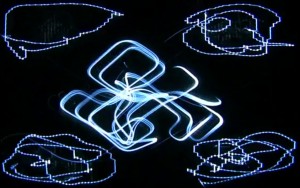 While raster graphics are understandably dominant in computer visual art, there has recently been renewed interest in vector graphics. Aesthetic factors include the seemingly infinite resolution, the line-based nature (mimicking pen/ink drawing), and the intrinsic impermanence of the display. Other motivations lie in repurposing or reusing obsolescent hardware, reimplementing historical devices, or simply choosing a different approach to the mainstream. It also seems reasonable to hypothesise that vector displays fell out of common use when computers were insufficiently powerful to fully exploit them, and that this limitation no longer applies.
While raster graphics are understandably dominant in computer visual art, there has recently been renewed interest in vector graphics. Aesthetic factors include the seemingly infinite resolution, the line-based nature (mimicking pen/ink drawing), and the intrinsic impermanence of the display. Other motivations lie in repurposing or reusing obsolescent hardware, reimplementing historical devices, or simply choosing a different approach to the mainstream. It also seems reasonable to hypothesise that vector displays fell out of common use when computers were insufficiently powerful to fully exploit them, and that this limitation no longer applies.
Many common audio synthesis algorithms and effects can be directly applied to vector synthesis. Other approaches include simulating chaotic oscillators, Rutt-Etra-style scan processing of live video, and video vectorisation. Vector graphics can be generated in hardware, often using modular synths, but arguably the more common approach is via software.
As with raster-based systems, there is a diverse range of creation/performance methodologies allowing varying degrees of audio/video correlation. At one extreme, visuals are generated separately, with a loose, VJ-style, relation to any audio present. However, when audio hardware and/or software is used, objects can easily be synthesised with both visual and auditory representations. The visuals may be a more literal depiction of the audio, sometimes even sending identical signals to the display and loudspeakers.
This paper presents results of experiments with a modified Vectrex games console, and compares the suitability of Purr Data and ChucK. Examples include font generation, audio visualisation, video vectorisation, chaotic oscillators and live improvisation.
Biography
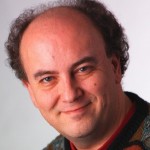 Douglas Nunn teaches Audio and Music Technology at Anglia Ruskin University, and is a visual artist, VJ, and composer. His PhD at Durham examined the use of parallel processing for automated transcription and resynthesis of polyphonic music. His other research interests include live audiovisual performance, lossless compression, sound analysis and sound synthesis.
Douglas Nunn teaches Audio and Music Technology at Anglia Ruskin University, and is a visual artist, VJ, and composer. His PhD at Durham examined the use of parallel processing for automated transcription and resynthesis of polyphonic music. His other research interests include live audiovisual performance, lossless compression, sound analysis and sound synthesis.
Joe Osmond – Waiting with James: Whitney and the ‘White Wait’
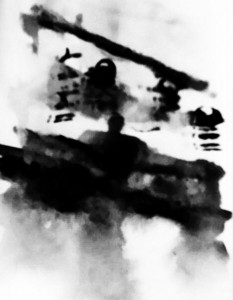 The speed of digitalisation is both its strength and its compositional weakness. Decisions are made quickly and efficiently but leave little time for prolonged contemplation. But why? Why not practice stillness? James Whitney, brother of John, knew this and adopted the Eastern concept of “White Wait” allowing for periods of calm reflection. He created raku ceramics before returning to the mechanics of abstract animation. As a writer and abstract animator Joe Osmond considers the idea of “Being Still” and using this concept as a means to a creative end. Joe’s presentation features extracts from his work for ZenPad including “Psychedelic Starlings with Windsynth”.
The speed of digitalisation is both its strength and its compositional weakness. Decisions are made quickly and efficiently but leave little time for prolonged contemplation. But why? Why not practice stillness? James Whitney, brother of John, knew this and adopted the Eastern concept of “White Wait” allowing for periods of calm reflection. He created raku ceramics before returning to the mechanics of abstract animation. As a writer and abstract animator Joe Osmond considers the idea of “Being Still” and using this concept as a means to a creative end. Joe’s presentation features extracts from his work for ZenPad including “Psychedelic Starlings with Windsynth”.
Biography
Joe Osmond is committed to making creativity available to all. His work includes “One stone for Hermione Levi” (EVA 2016), “The Colour of Silence” (Seeing Sound 2013) and “Birdsong for Prisoners”. He has a PhD in The Art of Sound.
Carly Vickers, University of New South Wales, Sydney – Exploring Gesture in Performance as Visual Communication
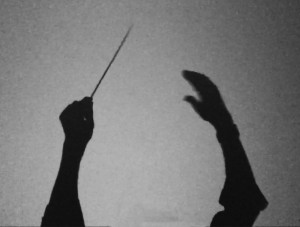 Exploring visual translations of the gestural language of conductors and the intuitive movements of musicians in performance, this paper discusses current experimentation from a practice-based PhD in visual communication. The research is focussed on traditional concert hall performance scenarios of western classical music, and how these performances can lack the multimodality in presentation required to engage modern audiences. Design interventions in the form of Visual Music are explored, specifically with existing large-scale orchestral works. The research approaches Visual Music as not only an opportunity for increased multimodality in the live performance setting, but also as a medium offering design opportunities for creating greater musical perception in non-specialist audiences. The graphic means used for capturing the conductor’s gestures to specific musical works will be presented, and experimentation in translating these gestures into graphic expressions discussed.
Exploring visual translations of the gestural language of conductors and the intuitive movements of musicians in performance, this paper discusses current experimentation from a practice-based PhD in visual communication. The research is focussed on traditional concert hall performance scenarios of western classical music, and how these performances can lack the multimodality in presentation required to engage modern audiences. Design interventions in the form of Visual Music are explored, specifically with existing large-scale orchestral works. The research approaches Visual Music as not only an opportunity for increased multimodality in the live performance setting, but also as a medium offering design opportunities for creating greater musical perception in non-specialist audiences. The graphic means used for capturing the conductor’s gestures to specific musical works will be presented, and experimentation in translating these gestures into graphic expressions discussed.
Biography
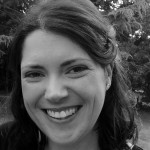 Carly is a multidisciplinary designer and musician. Currently an Associate Lecturer in Design at the University of New South Wales, Sydney, Australia, she holds a Bachelor of Music Studies (Performance) from the Sydney Conservatorium of Music, University of Sydney, Australia, and a Bachelor of Design (First Class Honours) from the University of New South Wales, Sydney, Australia.
Carly is a multidisciplinary designer and musician. Currently an Associate Lecturer in Design at the University of New South Wales, Sydney, Australia, she holds a Bachelor of Music Studies (Performance) from the Sydney Conservatorium of Music, University of Sydney, Australia, and a Bachelor of Design (First Class Honours) from the University of New South Wales, Sydney, Australia.
Carly is currently undertaking a practice-based PhD exploring the application of visual communication theories in live classical music performance contexts. Her work examines issues of engagement with western classical music in concert hall performance settings, and how the disruption of these traditional settings through design interventions could benefit audience engagement and musical perception.
As a musician, Carly is trained as an orchestral performer and large ensembles conductor. Her research interest is born of her work with students in music education and explores how design can be utilised to translate specialist languages, such as music, to broad non-specialist audiences.
As a graphic designer, Carly primarily works on design for print with a significant focus on design for performance, creative arts and educative contexts. She has also worked on numerous film projects.
Mariana Lopez, University of York – Seeing with our ears: designing soundtracks for visually impaired audiences
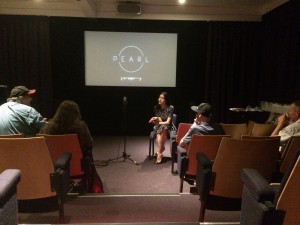 This paper presents the concepts, processes and results linked to the Enhancing Audio Description project (funded by the Arts and Humanities Research Council), which seeks to provide accessible audio-visual experiences to visually impaired audiences using sound design techniques and binaural audio. Film grammars have been developed throughout film history, but such languages have matured with sighted audiences in mind and assuming that seeing is more important than hearing. This presentation challenges such assumptions by demonstrating how sound effects, first person narration as well as breaking the conventions of sound mixing, can allow us to create accessible versions of films that are true to the filmmaker’s conception. The presentation will discuss ‘Pearl’, a short film used as a case study whose sound was re-designed with the input of visually impaired volunteers to provide an accessible yet engaging experience that can be shared regardless of audiences’ sight condition. We will also discuss how the guidelines developed have been applied in the context of higher education to train filmmakers on the importance of sound.
This paper presents the concepts, processes and results linked to the Enhancing Audio Description project (funded by the Arts and Humanities Research Council), which seeks to provide accessible audio-visual experiences to visually impaired audiences using sound design techniques and binaural audio. Film grammars have been developed throughout film history, but such languages have matured with sighted audiences in mind and assuming that seeing is more important than hearing. This presentation challenges such assumptions by demonstrating how sound effects, first person narration as well as breaking the conventions of sound mixing, can allow us to create accessible versions of films that are true to the filmmaker’s conception. The presentation will discuss ‘Pearl’, a short film used as a case study whose sound was re-designed with the input of visually impaired volunteers to provide an accessible yet engaging experience that can be shared regardless of audiences’ sight condition. We will also discuss how the guidelines developed have been applied in the context of higher education to train filmmakers on the importance of sound.
The Enhancing Audio Description project is led by Dr Mariana Lopez and Dr Gavin Kearney. To find out more about the project visit: http://enhancingaudiodescription.com/
Biography
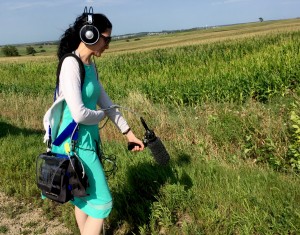 Mariana has a background in music, sound design and acoustics. Her MA dissertation (University of York) focused on exploring the creation of a new format of sonic art entitled ‘audio film’ that may be considered as an alternative to Audio Description for visually impaired audiences. In 2013 she completed her PhD at the University of York on the importance of virtual acoustics to further our understanding of medieval drama. In 2014 she joined the CoDE Research Institute at Anglia Ruskin University and in 2015 she was promoted to Senior Research Fellow. In 2016 she moved back to York to start a position as Lecturer in Sound Production and Post Production at the Department of Theatre, Film and Television. At York she leads the Masters in Postproduction with Sound Design. Mariana is active in the field of sound design, having worked on a number of short films, theatre productions and installations. She is the Chair of the Audio Engineering Society British Section.
Mariana has a background in music, sound design and acoustics. Her MA dissertation (University of York) focused on exploring the creation of a new format of sonic art entitled ‘audio film’ that may be considered as an alternative to Audio Description for visually impaired audiences. In 2013 she completed her PhD at the University of York on the importance of virtual acoustics to further our understanding of medieval drama. In 2014 she joined the CoDE Research Institute at Anglia Ruskin University and in 2015 she was promoted to Senior Research Fellow. In 2016 she moved back to York to start a position as Lecturer in Sound Production and Post Production at the Department of Theatre, Film and Television. At York she leads the Masters in Postproduction with Sound Design. Mariana is active in the field of sound design, having worked on a number of short films, theatre productions and installations. She is the Chair of the Audio Engineering Society British Section.
Keynote 3
Derek Holzer, Aalto University, Helskinki – Vector Synthesis: an Investigation into Sound-Modulated Light
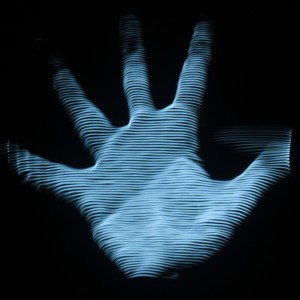 Since 2007, I have actively explored the history of certain obsolete audio/visual media technologies, following a very specific line of inquiry:
Since 2007, I have actively explored the history of certain obsolete audio/visual media technologies, following a very specific line of inquiry:
What sort of utopias and dystopias of their time were these devices designed to address, at what point and for what reason were they discarded, and have their inevitable replacements addressed these concerns any more or less completely?
This has led to a number of media archaeological re-enactments which place these discarded technologies in a contemporary context, coupled with a healthy skepticism of the idea of technological progress.
One of these re-enactments, Vector Synthesis, proposes a model of audiovisual performance using the obsolete technology of analogue voltage-controlled cathode ray tubes. It draws on the historical work of artists such as Mary Ellen Bute, John Whitney, Nam June Paik, Ben Laposky, and Steina & Woody Vasulka among many others. It also investigates the history of the computer as a military calculator dedicated to more efficient ways to drop bombs on other human beings, which was slowly appropriated into the service of artistic expression.
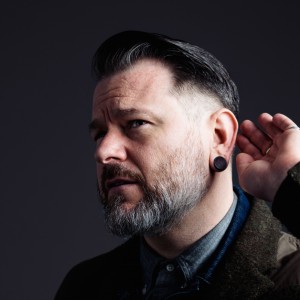 Biography
Biography
Derek Holzer (1972) is an American instrument builder and sound artist based in Helsinki FI & Berlin DE, whose current interests include DIY analog electronics, the relationship between sound + space, media archaeology and the meeting points of electroacoustic, noise, improv and extreme music. He has performed live, taught workshops and created scores of unique instruments and installations since 2002 across Europe, North and South America, and New Zealand.
Papers 4
Francesc Marti Perez, De Montfort University – Audiovisual composition using audiovisual sampling, synchronous granular synthesis and pseudorandom number generator algorithms
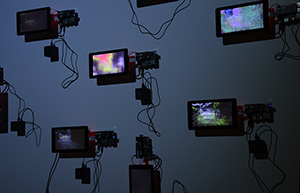 During the last century artists and researchers have developed and used different techniques to generate audiovisual compositions using digital technology. Some of these techniques are based in the concept of audiovisual sampling. Real-world images and sounds captured and digitized, are cut, mixed, manipulated and reassembled in order to generate new audiovisual materials. This paper describes a new method for creating audiovisual compositions based in audiovisual sampling, synchronous granular synthesis techniques and pseudorandom number generator algorithms. It also presents a new application for generating audiovisual content based in the method herein described. Finally, it briefly analyses some works, as “The Sounds of the World” (2016) – a thirteen-channel audiovisual installation, based in a network of Raspberry Pi computers –, with which the author proves the validity of this method for generating audiovisual creative works.
During the last century artists and researchers have developed and used different techniques to generate audiovisual compositions using digital technology. Some of these techniques are based in the concept of audiovisual sampling. Real-world images and sounds captured and digitized, are cut, mixed, manipulated and reassembled in order to generate new audiovisual materials. This paper describes a new method for creating audiovisual compositions based in audiovisual sampling, synchronous granular synthesis techniques and pseudorandom number generator algorithms. It also presents a new application for generating audiovisual content based in the method herein described. Finally, it briefly analyses some works, as “The Sounds of the World” (2016) – a thirteen-channel audiovisual installation, based in a network of Raspberry Pi computers –, with which the author proves the validity of this method for generating audiovisual creative works.
Biography
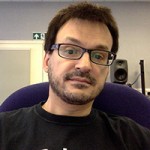 Francesc Martí is a mathematician, computer scientist, composer, sound and digital media artist born in Barcelona and currently living in the UK. He has a bachelor’s degree in Mathematics from the Autonomous University of Barcelona, and two master’s degrees, in Digital Arts, and in Computer Programming. He also obtained a scholarship for furthering his studies in Music Technology at IRCAM (Paris). Simultaneously, he studied music at the Conservatory of Sabadell. In 2014 he starts his project “Granular synthesis video”, with which he has already participated in more than 50 exhibitions and concerts around the world. Currently, he is pursuing his PhD in new media art at the De Montfort University of Leicester.
Francesc Martí is a mathematician, computer scientist, composer, sound and digital media artist born in Barcelona and currently living in the UK. He has a bachelor’s degree in Mathematics from the Autonomous University of Barcelona, and two master’s degrees, in Digital Arts, and in Computer Programming. He also obtained a scholarship for furthering his studies in Music Technology at IRCAM (Paris). Simultaneously, he studied music at the Conservatory of Sabadell. In 2014 he starts his project “Granular synthesis video”, with which he has already participated in more than 50 exhibitions and concerts around the world. Currently, he is pursuing his PhD in new media art at the De Montfort University of Leicester.
Trent Kim, University of the West of Scotland – Reflection of Light as a Methodology for New Lumia
In this paper, Trent Kim proposes reflection of light as a practice-based research methodology to understand the art of lumia by Thomas Wilfred and to create new lumia works. Thomas Wilfred was unable to declare whether lumia is painting or music, but his art already speaks for itself to firmly claim its status as the art of light. Trent Kim argues that reading lumia requires our anchorage on the medium of light itself rather than its derivative image projection. The irreducible depth of the Clavilux machine distinguishes it from a picture frame; and the rear projection screen found in automated Clavilux machines is not a cinematic space, but rather a frosted window through which we begin to imagine the architecture of light, hidden inside the enclosed space. The current lumia research primarily focuses on Wilfred’s automated/recorded lumia works and its aesthetic style of projected imagery, yet, this approach discriminates Wilfred’s other types of lumia works which were live performances or outdoor installations. Trent Kim’s research enters into the architecture of light and reveals the ontology of light in the combination of its form, glare, heat, colour, density, fluidity and depth by playing reflectors.
Biography
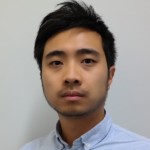 Trent Kim is a lecturer in Digital Art and Technical Theatre at the University of the West of Scotland, and guest-lectures at the Glasgow School of Art, the University of Glasgow and the Royal Conservatoire of Scotland. He is also a part time research student at the Royal College of Art, conducting his current lumia research. His practices range from theatre lighting design to ink prints, video art and lumia. His recent works interpret the art of lumia and he is particularly interested in creating live lumia performances on stage.
Trent Kim is a lecturer in Digital Art and Technical Theatre at the University of the West of Scotland, and guest-lectures at the Glasgow School of Art, the University of Glasgow and the Royal Conservatoire of Scotland. He is also a part time research student at the Royal College of Art, conducting his current lumia research. His practices range from theatre lighting design to ink prints, video art and lumia. His recent works interpret the art of lumia and he is particularly interested in creating live lumia performances on stage.
Julie Watkins, University of Greenwich – Singing Light: Visual Music
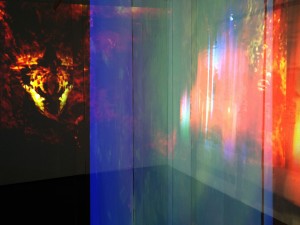 This paper will discuss my on-going practice-based research into composing visual music pieces, citing works from the visual music canon and my own practice. The aim is to create a framework for composing ‘abstracted’ visual music that is informed by, but not a re-making of, previous visual music. As a visual musician, I face the challenge of retaining my own artistic impetus, amidst an overwhelming choice of instruments, aesthetics, practice, techniques and technologies. This paper will examine navigating the ephemerality of artistic technology by utilizing strategies similar to composer Ron Kuivila’s; such as “under”, “over” and “into” and compositional methods such as Paul Klee’s use of ‘individual’ and ‘dividual’.
This paper will discuss my on-going practice-based research into composing visual music pieces, citing works from the visual music canon and my own practice. The aim is to create a framework for composing ‘abstracted’ visual music that is informed by, but not a re-making of, previous visual music. As a visual musician, I face the challenge of retaining my own artistic impetus, amidst an overwhelming choice of instruments, aesthetics, practice, techniques and technologies. This paper will examine navigating the ephemerality of artistic technology by utilizing strategies similar to composer Ron Kuivila’s; such as “under”, “over” and “into” and compositional methods such as Paul Klee’s use of ‘individual’ and ‘dividual’.
Visual music can be perceived as overly repetitive, cold and alienating if it seems to embody a mechanical alignment of music to image, or if it seems disengaged from human emotions. A key objective is to create work that is non-narrative, ‘abstracted’, and yet suffused with human presence and emotion. To that end, wordlessly sung music is fused with ‘abstracted’ animation through composing motion, sound temporalizing images, sound and space and sense of identity embedded in the human voice. Given the rapid development of AI within music and animation it is timely to develop methodologies for creating pieces that afford a “soft fascination”.
Biography
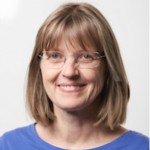 Julie Watkins is a senior lecturer in Film and Television at the University of Greenwich. She worked as lead creative in prestigious Post-Production facilities in Soho and Manhattan. She designed concepts, led Technical Direction, Animation, Motion Graphic and Visual Effects Teams, for Commercials, Broadcast Graphics and Films. She taught at New York University. She joined the University of Greenwich in 2006, initiated a Film and Television degree and partnership with the BBC. She has MA (distinction) in Graphic Design from University of the Arts London. Supporting her visual music practice she has presented papers and shown work at DRHA 2014, 2015, 2016 and 2017 and Sound and Image 2015, 2016 and 2017 published papers in Body Space & Technology Journal in 2016, 2017 and 2018 and is now completing a PhD.
Julie Watkins is a senior lecturer in Film and Television at the University of Greenwich. She worked as lead creative in prestigious Post-Production facilities in Soho and Manhattan. She designed concepts, led Technical Direction, Animation, Motion Graphic and Visual Effects Teams, for Commercials, Broadcast Graphics and Films. She taught at New York University. She joined the University of Greenwich in 2006, initiated a Film and Television degree and partnership with the BBC. She has MA (distinction) in Graphic Design from University of the Arts London. Supporting her visual music practice she has presented papers and shown work at DRHA 2014, 2015, 2016 and 2017 and Sound and Image 2015, 2016 and 2017 published papers in Body Space & Technology Journal in 2016, 2017 and 2018 and is now completing a PhD.